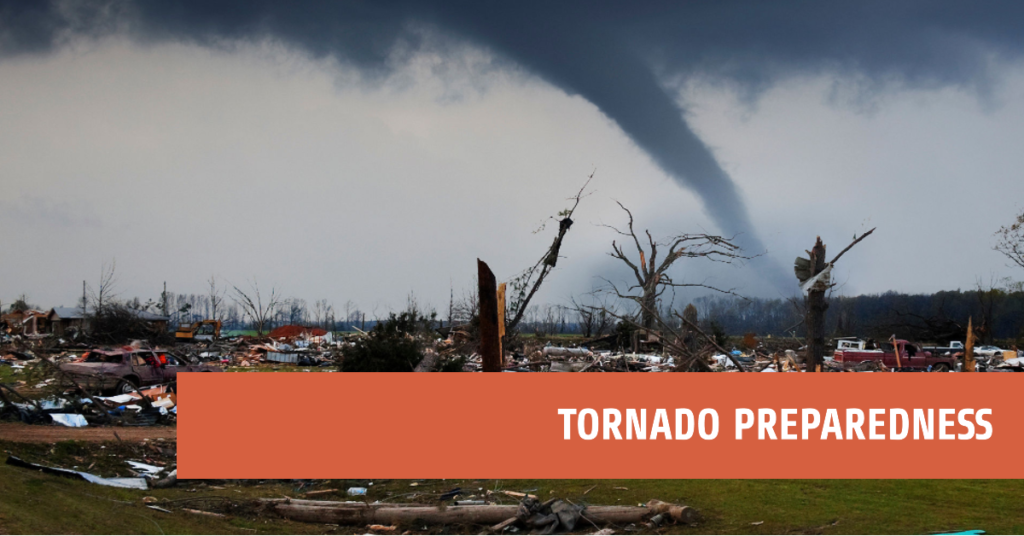
Tornadoes pose significant risks and can cause catastrophic damage. Being well-prepared and knowledgeable about tornadoes and survival strategies is crucial to ensure safety during these events.
Understanding Tornadoes
How tornadoes form
Tornadoes form from severe thunderstorms when warm, moist air meets cooler, drier air. This interaction creates instability, leading to the formation of a rotating column of air that extends from the thunderstorm’s base to the ground.
Tornado classifications and their impact
Tornadoes are categorized by the Enhanced Fujita (EF) scale, which ranges from EF0 to EF5. The scale measures wind speed, potential damage, and severity, with EF5 tornadoes being the most destructive.
Tornado-prone areas and seasons
Tornadoes can occur anywhere, but they are most common in the United States, particularly in the region known as Tornado Alley. This area includes parts of Texas, Oklahoma, Kansas, and Nebraska. Tornadoes are most likely to occur during spring and early summer months.
Preparing for a Tornado
Develop a plan
- Designate a safe room or shelter location: Identify a small, windowless, and structurally sound room in your home, such as a basement or interior room on the lowest level. This space should provide maximum protection from a tornado.
- Create a communication plan for family members: Ensure that all family members know the plan, including how to contact each other and where to meet after the tornado has passed.
- Plan for pets and animals: Make arrangements for the safety of pets and livestock during a tornado. Prepare a pet emergency kit with food, water, and essential supplies.
Assemble a tornado emergency kit
- Essentials to include: Your kit should contain a flashlight, battery-powered radio, extra batteries, first aid supplies, and a whistle to signal for help. Also, pack non-perishable food, water, and essential medications.
- Protective gear and clothing: Include helmets or hard hats, sturdy shoes, and heavy gloves to protect yourself from flying debris during a tornado.
- Important documents and emergency contact information: Keep copies of essential documents, such as insurance policies and identification, as well as a list of emergency contacts in a waterproof container.
Tornado Warning Signs and Safety Tips
Warning signs
- Dark, greenish sky: A greenish hue in the sky may indicate the presence of hail, which often accompanies severe thunderstorms and tornadoes.
- Large hail: Hail can precede or occur during a tornado. Stay alert for signs of hail and take cover.
- Wall cloud: A low-hanging, rotating cloud can be a precursor to a tornado. If you see a wall cloud, take shelter immediately.
- Loud, continuous roar: Tornadoes can produce a loud, rumbling sound, similar to a freight train. If you hear this noise, seek shelter.
Safety tips
- Stay informed: Monitor local weather reports for tornado watches and warnings. A tornado watch means conditions are favorable for tornado development, while a tornado warning means a tornado has been spotted or indicated by radar.
- Act quickly: If a tornado warning is issued or you see a tornado approaching, take shelter immediately. Do not wait for the tornado to get closer.
- Stay low: Move to the lowest level of your home or building, and stay away from windows and doors. Crouch low, cover your head with your hands, and protect your neck.
- Avoid vehicles: Do not attempt to outrun a tornado in a vehicle. If you’re caught in a car, find the nearest sturdy shelter or lie flat in a low area, covering your head with your hands.
After the Tornado
Assess your surroundings
- Check for injuries: Ensure everyone in your group is safe and attend to any injuries. Call for emergency assistance if needed.
- Check for damage: Inspect your home for structural damage, gas leaks, or electrical hazards. Avoid using open flames, as they may ignite leaking gas.
- Document damage: Take photos and videos of any damage to your property for insurance purposes.
Recovery and cleanup
- Stay informed: Continue to monitor local news for updates on affected areas, road closures, and relief efforts.
- Exercise caution: Be cautious when reentering damaged buildings, as there may be hidden hazards. Wear protective gear, such as gloves and sturdy shoes, during cleanup efforts.
- Help others: Assist neighbors and community members in their recovery efforts, and consider volunteering with local relief organizations.
Tornado Preparedness Resources
- Basic Survival Skills Everyone Should Know: Learn the essential skills to stay safe in any emergency situation.
- Emergency Preparedness Planning: Go Bags and Staying Informed: Enhance your preparedness with a comprehensive guide to planning and staying informed during emergencies.
- Choosing the Right Go Bag: Find the perfect go bag to fit your needs and keep you prepared for any situation.
By staying informed and prepared, you can increase your chances of survival during a tornado. Remember, your safety is the top priority. Be ready to act quickly and decisively when faced with this powerful force of nature.
